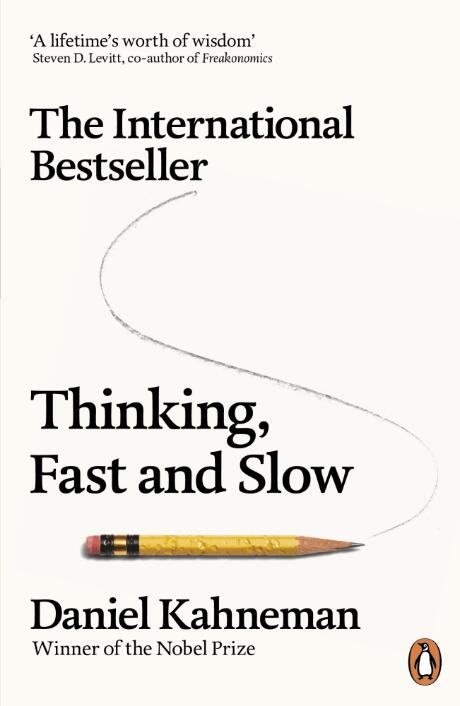Thinking, Fast and Slow
Review Thinking, Fast and Slow
by DANIEL KAHNEMAN
Description
Finance meets psychology in this groundbreaking book that takes us to rationalities of the mind and introduces us to two pillars that fundamentally affect the way our logic functions. Based on the author’s in-depth assessment, everyone has two psychological systems that function according to specifics. The first system is known to be rapid, intuitive, and emotional, while the second one counters the initial by functioning slower, straightforward, and rational. The implications of overconfidence to corporate techniques, the ambiguity of what may give us satisfaction, and the cognitive biases that sway our decisions can all be attributed to these systems as they hold proper command to our judgments and decisions.
Poking readers straight to mind, Thinking, Fast and Slow exposes how our own cognition can be the most advantageous asset in the same manner that it can betray us. This rationalizes the complexities of the minds and how to deal and potentially utilize the benefits of slow thinking properly. Generally, this book provides a very practical and eye-opening insight about cognitive functions that sway our corporate and personal undertakings. More so, it enumerates methods on how to utilize different strategies to arm against the mental setbacks that often hinder us from picking an ideal decision.
About the Author
Daniel Kahneman is a renowned psychologist with a specialization in psychological judgments and decision-making. In line with this, he also specializes in behavioral economics that landed him the 2002 Nobel Memorial Prize in Economic Sciences. Some of his most laudable research involves those that question human cognitive present in modern economic theory. With his associates, he successfully theorized a principle that concerns common human errors embedded from heuristics and biases, all while proposing another theory called prospect theory.
Table of Contents
INTRODUCTION
PART 1. TWO SYSTEMS
- The Characters of the Story
- Attention and Effort
- The Lazy Controller
- The Associative Machine
- Cognitive Ease
- Norms, Surprises, and Causes
- A Machine for Jumping to Conclusions
- How Judgments Happen
- Answering an Easier Question
PART 2. HEURISTICS AND BIASES
- The Law of Small Numbers
- Anchors
- The Science of Availability
- Availability, Emotion, and Risk
- Tom W’s Specialty
- Linda: Less is More
- Causes Trump Statistics
- Regression to the Mean
- Taming Intuitive Predictions
PART 3. OVERCONFIDENCE
- The Illusion of Understanding
- The Illusion of Validity
- Intuitions vs. Formulas
- Expert Intuition: When Can We Trust It?
- The Outside View
- The Engine of Capitalism
PART 4. CHOICES
- Bernoulli’s Errors
- Prospect Theory
- The Endowment Effect
- Bad Events
- The Fourfold Pattern
- Rare Events
- Risk Policies
- Keeping Score
- Reversals
- Frames and Reality
PART 5. TWO SELVES
- Two Selves
- Life as a Story
- Experienced Well-Being
- Thinking About Life
CONCLUSIONS
APPENDIX A: Judgment Under Uncertainty
APPENDIX B: Choices, Values, and Frames
NOTES
ACKNOWLEDGMENTS
INDEX
